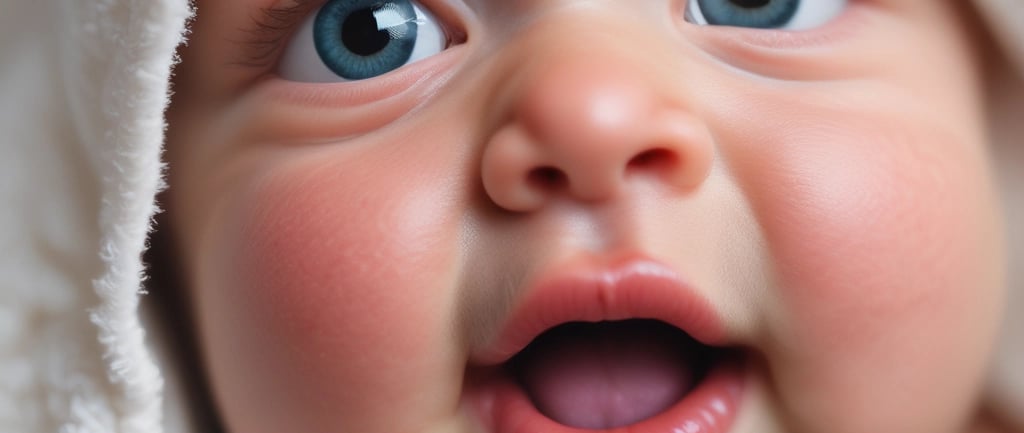Thrush
Thrush can be quite unsuspecting until you feel breast pain, then treatment needs to be undertaken.
2/22/20252 min read


Thrush can creep up on you quite unsuspectingly. One day you are feeding fine and then next you notice your nipples are a bit pinker than usual, there is flakey skin surrounding them, and then eventually, you get this stabbing pain from the nipples that shoots deep into the breasts, usually when feeding your baby. This nuisance of a condition is called Thrush. Lets discuss below how to deal with thrush.
Key points about thrush in babies:
Mild discomfort:
Most cases of thrush in babies cause only mild discomfort.
Signs of discomfort:
Some babies might become fussy, refuse to feed, or show signs of irritation around the mouth when they have thrush.
Appearance:
Thrush appears as milky white patches on the tongue, inner cheeks, or roof of the mouth.
Treatment:
Thrush is easily treated with antifungal medication prescribed by a doctor, usually in the form of a gel applied to the affected area. You must continue treatment for the duration advised by your practitioner.
Nipple Thrush: Causes, Symptoms, Treatment & Prevention
What is Nipple Thrush?
Nipple thrush is a yeast infection caused by Candida albicans that affects the nipples and sometimes the milk ducts in breastfeeding women. It can cause pain, redness, and irritation, making breastfeeding uncomfortable. Thrush can also be passed between the mother and baby, leading to oral thrush in the infant.
Symptoms of Nipple Thrush
Burning or stabbing pain in the nipples or deeper in the breast (often during or after feeding)
Itchy, shiny, or flaky skin on or surrounding the nipple
Bright pink, red, or cracked nipples (without an obvious cause like a poor latch)
Pain that persists after adjusting latch or position
White patches in baby’s mouth (a sign that baby may also have oral thrush)
Diaper rash in baby, which may be caused by yeast
Causes of Nipple Thrush
Recent antibiotic use, which can kill good bacteria and allow yeast to overgrow
Cracked or damaged nipples, providing an entry point for infection
A weakened immune system (e.g., from stress, illness, or pregnancy)
Excess moisture, as yeast thrives in warm, damp environments (e.g., breast pads that aren’t changed often)
Transmission from baby, who may have oral thrush and pass it to the nipple
Treatment for Nipple Thrush
For the Mother (Nipples & Breasts)
Antifungal Creams (prescribed or over-the-counter, like miconazole or clotrimazole)
Apply after each feed and wipe off before the next feed.
Oral Antifungal Medications (e.g., fluconazole, if topical treatments aren’t working)
Pain Relief (ibuprofen or acetaminophen for discomfort)
Gentian Violet (a purple antiseptic liquid—only use under medical guidance)
For the Baby (Oral Thrush & Diaper Rash)
Oral antifungal drops or gel (like nystatin or miconazole)
Antifungal cream for diaper rash (if present)
Clean/sterilise pacifiers daily and if dropped on the floor
Hygiene & Home Remedies
Wash hands thoroughly after feeding or applying creams
Boil pacifiers, bottle nipples, pump parts, and toys daily
Change breast pads frequently and avoid plastic-lined ones
Wash bras and nursing pads in hot water and dry in sunlight
Try probiotics to restore healthy bacteria
How to Prevent Nipple Thrush
Ensure a proper latch to prevent nipple damage
Air-dry nipples after feeds
Wear breathable, cotton bras and avoid tight clothing
Limit sugary foods, as sugar feeds yeast
Take probiotics, especially if using antibiotics
Change breast pads frequently to keep the area dry
Treat baby’s oral thrush quickly to prevent reinfection
When to See a Doctor
If pain persists despite treatment
If symptoms worsen or spread
If flu-like symptoms develop (could indicate a more serious infection like mastitis)
Moana Care
Nursing | Postpartum | Lactation
Contact us
© 2024 Moana Care. ABN 47 858 316 498. All rights reserved. Logo and Photos copyright of owner Moana Care or Canva images.
Servicing Sydney, Eastern Suburbs, North Shore, Inner West, Sutherland Shire, St George, Sydney City, Canberra, Young NSW and in between by appointment.
Phone: 0421363334
